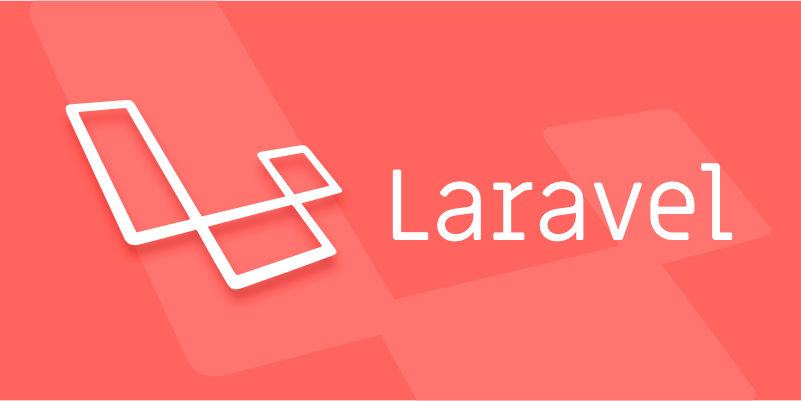Leveraging Resource Controllers for RESTful Development in Laravel
Jul 06, 2025 am 01:22 AMResource Controllers is an efficient tool in Laravel for building RESTful interfaces. It handles common HTTP request actions through predefined methods and customizes routing and middleware. 1. Use Route::resource() to quickly register standard CRUD routes; 2. Control enabled routes through only or except; 3. Use names to customize route names; 4. Add middleware to enable access control; 5. It is recommended to extract verification and business logic to keep the controller single responsibilities.

In Laravel development, Resource Controllers is a very practical tool when building RESTful interfaces. They not only reduce the writing of duplicate code, but also make routing and controller logic clearer and more standardized. If you are developing a standard CRUD application, using Resource Controllers can save a lot of time.

What is a Resource Controller?
Laravel's Resource Controller provides a predefined set of methods to handle common HTTP request actions (such as index, create, store, show, edit, update, and destroy). The standard routes corresponding to these methods can be automatically registered through Route::resource() .

For example, if you have a blog system that has Post resources, you only need to run an Artisan command:
php artisan make:controller PostController --resource
This generates a controller with standard methods, each method corresponding to a resource operation. This approach allows you to follow RESTful design principles from the very beginning.

How to use Resource Controllers efficiently
Only the required routes are enabled
Sometimes you don't need all seven routes. For example, a resource is only allowed to be viewed and created, and does not require editing or deletion. At this time, you can use only or except to restrict the registered routes:
Route::resource('posts', PostController::class)->only(['index', 'show', 'create', 'store']);
Or eliminate actions you don't want:
Route::resource('posts', PostController::class)->except(['destroy']);
Doing so will make the routing cleaner and avoid exposing unnecessary interfaces.
Custom method name and route name
By default, the method and route name of the Resource Controller are fixed. But you can customize them to suit your business needs. For example:
Route::resource('photos', PhotoController::class)->names([
'create' => 'photos.build',
'store' => 'photos.save'
]);This can be helpful when you need to namespace division or permission control for certain operations.
Use middleware to control access rights
It is very common to add middleware to the Resource Controller. You can specify it directly in the route:
Route::resource('posts', PostController::class)->middleware('auth');
You can also add it in the controller constructor:
public function __construct()
{
$this->middleware('auth')->except(['index', 'show']);
}This fine-grained permission control method is very suitable for projects in multi-role systems.
Tips: Organize controller logic rationally
Although Resource Controller provides a unified structure, in actual development you will find that some methods may become bloated, especially when the business logic is complex. At this time, it is recommended:
- Extract data verification into Form Requests
- Encapsulate core logic using Service classes
- Maintain a single responsibility in the controller, focusing on the processing of requests and responses
For example, don't write too many database operations in the store method, but call a PostService::create() method to do the actual work.
Basically that's it. Resource Controllers is one of the basic tools for Laravel to build RESTful APIs. Using them well can significantly improve development efficiency. Mastering how it is used and combining some good architectural practices will make your project easier to maintain.
The above is the detailed content of Leveraging Resource Controllers for RESTful Development in Laravel. For more information, please follow other related articles on the PHP Chinese website!

Hot AI Tools

Undress AI Tool
Undress images for free

Undresser.AI Undress
AI-powered app for creating realistic nude photos

AI Clothes Remover
Online AI tool for removing clothes from photos.

Clothoff.io
AI clothes remover

Video Face Swap
Swap faces in any video effortlessly with our completely free AI face swap tool!

Hot Article

Hot Tools

Notepad++7.3.1
Easy-to-use and free code editor

SublimeText3 Chinese version
Chinese version, very easy to use

Zend Studio 13.0.1
Powerful PHP integrated development environment

Dreamweaver CS6
Visual web development tools

SublimeText3 Mac version
God-level code editing software (SublimeText3)

Hot Topics
 What are routes in Laravel, and how are they defined?
Jun 12, 2025 pm 08:21 PM
What are routes in Laravel, and how are they defined?
Jun 12, 2025 pm 08:21 PM
In Laravel, routing is the entry point of the application that defines the response logic when a client requests a specific URI. The route maps the URL to the corresponding processing code, which usually contains HTTP methods, URIs, and actions (closures or controller methods). 1. Basic structure of route definition: bind requests using Route::verb('/uri',action); 2. Supports multiple HTTP verbs such as GET, POST, PUT, etc.; 3. Dynamic parameters can be defined through {param} and data can be passed; 4. Routes can be named to generate URLs or redirects; 5. Use grouping functions to uniformly add prefixes, middleware and other sharing settings; 6. Routing files are divided into web.php, ap according to their purpose
 What are policies in Laravel, and how are they used?
Jun 21, 2025 am 12:21 AM
What are policies in Laravel, and how are they used?
Jun 21, 2025 am 12:21 AM
InLaravel,policiesorganizeauthorizationlogicformodelactions.1.Policiesareclasseswithmethodslikeview,create,update,anddeletethatreturntrueorfalsebasedonuserpermissions.2.Toregisterapolicy,mapthemodeltoitspolicyinthe$policiesarrayofAuthServiceProvider.
 How do I create new records in the database using Eloquent?
Jun 14, 2025 am 12:34 AM
How do I create new records in the database using Eloquent?
Jun 14, 2025 am 12:34 AM
To create new records in the database using Eloquent, there are four main methods: 1. Use the create method to quickly create records by passing in the attribute array, such as User::create(['name'=>'JohnDoe','email'=>'john@example.com']); 2. Use the save method to manually instantiate the model and assign values ??to save one by one, which is suitable for scenarios where conditional assignment or extra logic is required; 3. Use firstOrCreate to find or create records based on search conditions to avoid duplicate data; 4. Use updateOrCreate to find records and update, if not, create them, which is suitable for processing imported data, etc., which may be repetitive.
 How do I run seeders in Laravel? (php artisan db:seed)
Jun 12, 2025 pm 06:01 PM
How do I run seeders in Laravel? (php artisan db:seed)
Jun 12, 2025 pm 06:01 PM
Thephpartisandb:seedcommandinLaravelisusedtopopulatethedatabasewithtestordefaultdata.1.Itexecutestherun()methodinseederclasseslocatedin/database/seeders.2.Developerscanrunallseeders,aspecificseederusing--class,ortruncatetablesbeforeseedingwith--trunc
 What is the purpose of the artisan command-line tool in Laravel?
Jun 13, 2025 am 11:17 AM
What is the purpose of the artisan command-line tool in Laravel?
Jun 13, 2025 am 11:17 AM
Artisan is a command line tool of Laravel to improve development efficiency. Its core functions include: 1. Generate code structures, such as controllers, models, etc., and automatically create files through make: controller and other commands; 2. Manage database migration and fill, use migrate to run migration, and db:seed to fill data; 3. Support custom commands, such as make:command creation command class to implement business logic encapsulation; 4. Provide debugging and environment management functions, such as key:generate to generate keys, and serve to start the development server. Proficiency in using Artisan can significantly improve Laravel development efficiency.
 How do I install Laravel on my operating system (Windows, macOS, Linux)?
Jun 19, 2025 am 12:31 AM
How do I install Laravel on my operating system (Windows, macOS, Linux)?
Jun 19, 2025 am 12:31 AM
Yes,youcaninstallLaravelonanyoperatingsystembyfollowingthesesteps:1.InstallPHPandrequiredextensionslikembstring,openssl,andxmlusingtoolslikeXAMPPonWindows,HomebrewonmacOS,oraptonLinux;2.InstallComposer,usinganinstalleronWindowsorterminalcommandsonmac
 How do I define methods (actions) in a controller?
Jun 14, 2025 am 12:38 AM
How do I define methods (actions) in a controller?
Jun 14, 2025 am 12:38 AM
Defining a method (also known as an action) in a controller is to tell the application what to do when someone visits a specific URL. These methods usually process requests, process data, and return responses such as HTML pages or JSON. Understanding the basic structure: Most web frameworks (such as RubyonRails, Laravel, or SpringMVC) use controllers to group related operations. Methods within each controller usually correspond to a route, i.e. the URL path that someone can access. For example, there may be the following methods in PostsController: 1.index() – display post list; 2.show() – display individual posts; 3.create() – handle creating new posts; 4.u
 How do I run tests in Laravel? (php artisan test)
Jun 13, 2025 am 12:02 AM
How do I run tests in Laravel? (php artisan test)
Jun 13, 2025 am 12:02 AM
ToruntestsinLaraveleffectively,usethephpartisantestcommandwhichsimplifiesPHPUnitusage.1.Setupa.env.testingfileandconfigurephpunit.xmltouseatestdatabaselikeSQLite.2.Generatetestfilesusingphpartisanmake:test,using--unitforunittests.3.Writetestswithmeth






